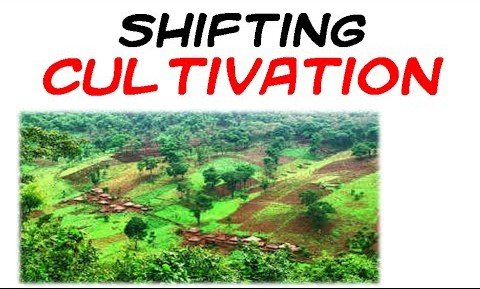Have you ever wondered what “shifting cultivation” is and how it impacts people’s farming practices? Shifting cultivation has become more common as a way to farm all over the world, especially in tropical areas. It works well in many places because it involves growing crops on land that has been cleared of plants and left to rest for a certain amount of time before being used again. Read on to learn more about this unique technique and its relationship with sustainability, crop rotation cycles, pros and cons, and more!
What is Shifting Cultivation?
Shifting cultivation, also known as “slash-and-burn agriculture,” is when farmers clear land by slashing vegetation and burning forests and woodlands to create clear land for agricultural purposes. It was a remarkable innovation in primitive cultures and a transition between food gathering and food production. Even in the modern age, the system is widely adopted in different parts of the world. Shifting cultivation was a first step in the direction of food production during early civilization.
Shifting cultivation is the oldest system of crop cultivation. It is now a source of environmental degradation, soil erosion, and the conversion of good forest areas into wastelands. Ingty and Goswami (1979) say that there are many reasons why a sudden switch from shifting cultivation to settled cultivation might not work. So, the people who grow crops on the move could start with Taungya cultivation and then work toward settled agriculture.
Process of cultivation
First, farmers have to find a designated spot where they want to plant, somewhere that is close to their villages or settlements. Before they can plant, they have to remove the plants and vegetation that normally cover the land. Using axes and machetes, farmers cut down most of the tall trees, which normally help bring down the smaller trees.
Next, the farmers burn the debris under carefully controlled conditions. Whenever it rains, the rain comes and washes the fresh ashes into the soil, providing the needed nutrients. The cleared area is known as a swidden. The cleared land can support crops for only three years or less.
After three years,the quick depletion of nutrients in the soil makes the land is no longer good for growing crops. When the swidden is no longer fertile, the villagers and farmers find a new site to begin clearing out. They leave the old site uncropped for many years, allowing it to go back to its normal vegetation state; this could take up to twenty years.
Crops Of Shifting Cultivation
Most families grow for subsistence purposes, just to eat and live, so one swidden might have a large variety of crops. In other cases, the crops grown by each village vary according to local customs and tastes. Upland rice is the main crop in Southeast Asia. Maize (corn) and manioc (cassava) are the main crops in South America, and sorghum is the main crop in Africa. Yams, sugarcane, plantains, and vegetables are also grown in some regions. These crops originated in one region of shifting cultivation and have diffused to other regions in recent years.
Advantages Of Shifting Cultivation
- It helps the land get back its lost nutrients, and as long as no damage occurs, this form of agriculture is one of the most sustainable methods.
- So, it’s easy to reuse or restore the land because it gets seeds and nutrients from nearby plants or the environment.
- Shift farming saves a wide range of resources and provides nutrients because usually it needs to clear and burn a small area, and the new area offers many nutrients.
- It helps to ensure more productivity and sustainability of agriculture.
- In shift farming, it is easy to grow crops after the process of slash and burn. This is why shifting agriculture is also popularly known as “slash-and-burn” farming.
- It is an environmentally friendly mode of farming as it is organic.
- Shift cultivation is a mode or form of weed control.
- It also plays a crucial role in pest control.
- Shifting farming modes also significantly reduces soil-borne bone diseases.
- It also reduces the rate of environmental degradation.
Disadvantages Of Shifting Cultivation
- Because farmers go on and destroy another little portion of the forest after the soil fertility depletion, it can quickly result in deforestation.
- Shift farming can easily cause soil erosion and desertification.
- It destroys watersheds.
- Shift farming is uneconomical
- It easily leads to a loss of biodiversity.
- Water pollution in coastal areas is easy because of raw sewage and oil residue.
- Shifting modes of farming restrict the intensity of land use.
